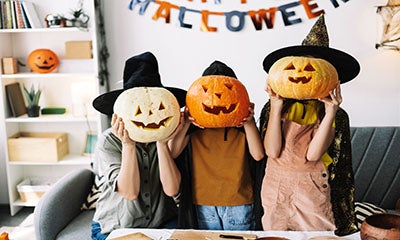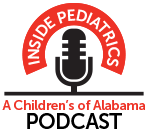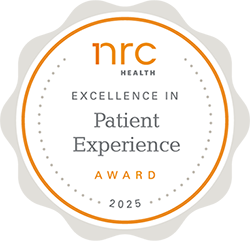Keeping Your Child Safe This Halloween
October 27, 2025
Birmingham, Ala. (Oct. 27, 2025) — 'Tis the season for ghosts and goblins, pumpkins and skeletons, and all things scary. But as this season can be fun and spooky, it can also be dangerous.
“On average, on Halloween, children are more than twice as likely to be hit by a car on that day,” said Leslie Brown, Safe Kids Coordinator at Children’s of Alabama. “We want to make sure families and communities are aware of this so they can do some simple things ahead of time to prepare for that day.”
Brown says those preparations can be seen as things to think about before Halloween, during trick-or-treating, and once children get home.
Before Halloween:
Brown says that as parents make decisions about their children’s costumes, they should ensure the costume includes something reflective, such as reflective tape, glow necklaces, or flashlights. Brown says these items help drivers see that children are ahead of them. She also recommends the costume fit appropriately to prevent a trip or a fall. If your child’s costume includes a mask, she recommends having the child wear it for pictures. But once you leave for trick-or-treat festivities, consider putting on non-toxic makeup or face paint. This way, a child’s visual field is not obstructed.
“We recommend that parents, if their child is younger than 12, they really need a responsible adult to go trick-or-treating with them,” said Brown. “If your child is old enough and mature enough to trick-or-treat without adult supervision, make sure they are traveling in groups and carrying a cell phone. Also, make sure they put down the phone and are not distracted when they are crossing the street.”
Brown says drivers also need to start making plans for Halloween, since most families are out for activities between 5:30 p.m. and 9:30 p.m.
“The days are getting shorter, it’s getting darker earlier, go ahead and turn your headlights on earlier in the day so you can see children who are at a greater distance from you earlier in the evening,” said Brown. “A little extra light helps spot kids and families at a greater distance for drivers.”
Drivers should also take extra time to look for children at intersections, on medians, and at curbs. They should also make sure they enter and exit driveways slowly.
Brown says parents should also have a conversation with their children about what treats are okay to eat. She says children should be told that when accepting homemade items, they should come from someone they know, and that parents should know all the ingredients before a child eats them.
During Trick-or-Treat:
Brown says that while families are participating in Halloween festivities, safety must always be at the forefront. She says it is important for families to talk about where they will be trick-or-treating. Staying closer to home is good because you will know many of the people in the neighborhood, and children will not get lost.
“Make sure children are going up to a home that is expecting them, preferably in your neighborhood, a place that they know trick-or-treaters are going to be,” said Brown.
Brown says that while children are trick-or-treating, they should make eye contact with drivers before crossing in front of them.
Homeowners also play a role in Halloween safety. They should make sure their outside lights are on and, if possible, light the walkway to their door. They should also remove anything that could cause someone to trip or fall on their lawn and keep their family pets away from trick-or-treaters.
When Children Get Home:
Brown says children can be excited once they return home with all their treats, but that’s when parents need to step in to make sure everything is safe to eat. She suggests that parents keep track of how much candy their children have and, once they get home, dump out everything so parents can see it.
“Parents should make sure the packaging is intact and that it is not faded or has not been tampered with, said Brown.
Parents should throw out candy with torn packages, spoiled items, and any homemade treats that were given to them by a stranger. Anything unwrapped should be thrown away. Also, don’t let young children have hard candy or gum that could cause choking. Also, have children wash their hands before eating and brush their teeth afterwards. Parents also may want to consider letting their children have one or two treats a day instead of leaving candy out in big bags or bowls.
Brown says there’s only one goal on Halloween night: that families have fun and come home safely.
For more safety advice, click here.










